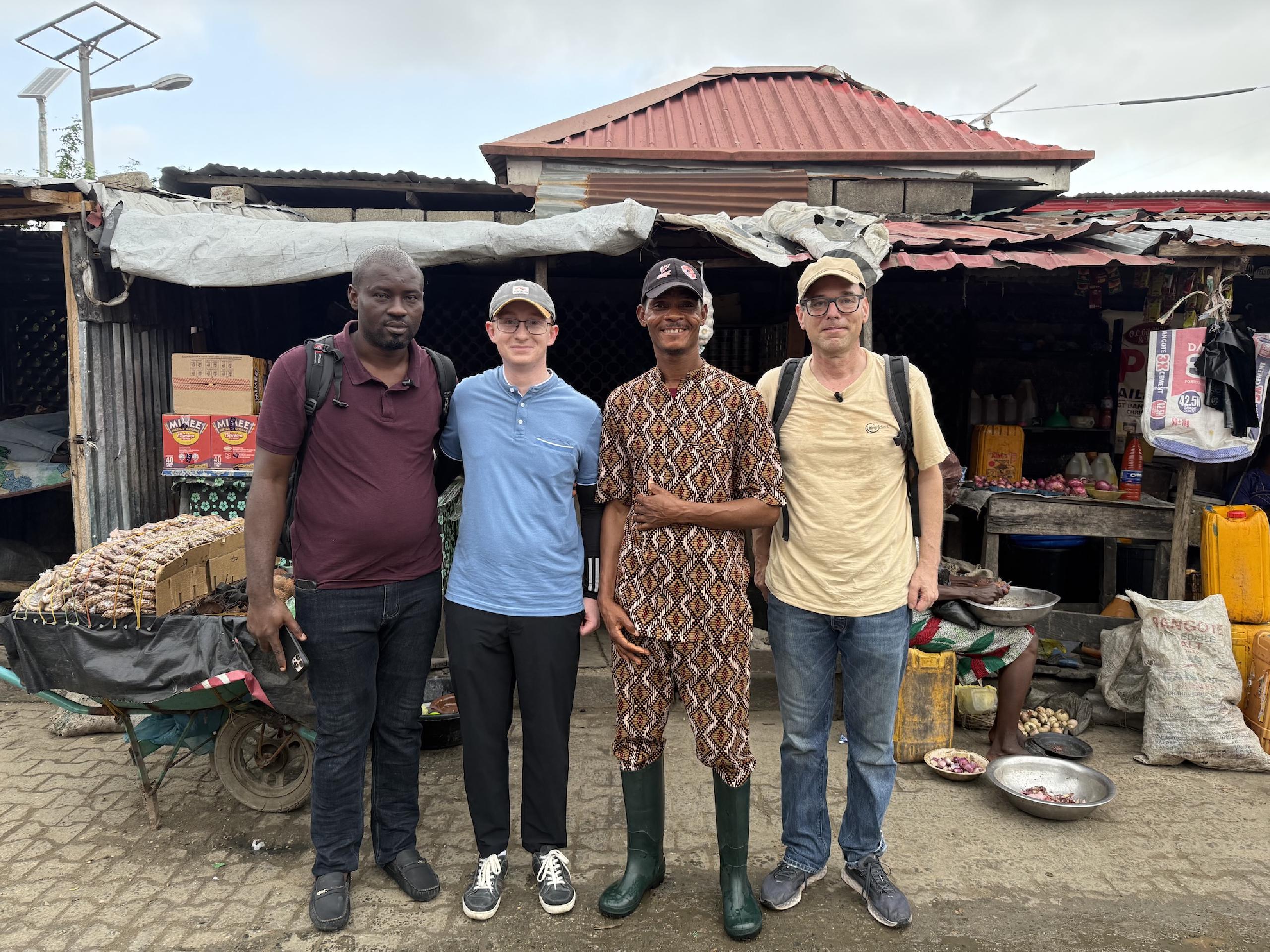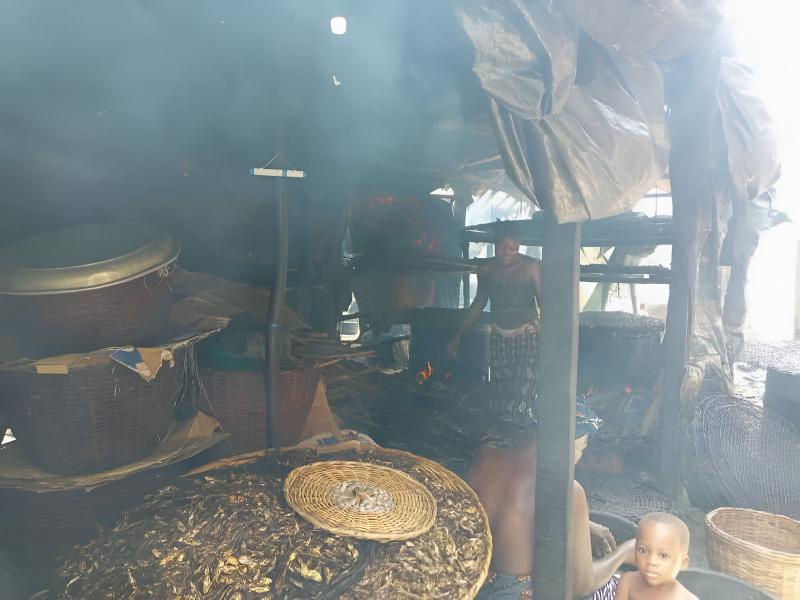Open and Accurate Air Quality Monitors
We design professional, accurate and long-lasting air quality monitors that are open-source and open-hardware so that you have full control on how you want to use the monitor.
Learn MoreCan meaningful change really happen within just five years? It depends on what you’re looking at. But when it comes to air quality monitoring in Nigeria, it certainly can. A few years back, when people needed air quality data, they mostly had to rely on either one of the country’s two reference-grade air quality monitoring stations located in Lagos or Abuja. These systems were often non-functional, and getting hold of any data usually required special permission from the agencies managing the equipment.
Today, however, the picture looks very different. The gap left by those limited reference stations is now being filled by a network of low-cost sensors. Many of which were set up by researchers like Dr. Okwong John Walter, a member of the Air Quality Monitoring Research Group (AQMRG), University of Lagos.
Okwong is a plant scientist who completed his Masters and PhD in Botany. While Botany has always been his main focus, it was during his master’s program – when he specialized in aerobiology – that his interest in air quality began to take root.
He has been a part of a number of air quality initiatives that helped shape Nigeria’s current monitoring landscape. He was involved in a U.S. Department of State-funded project which aimed to deploy 65 low-cost sensors in countries such as Uganda, Burundi, Ghana, Cameroon, and Nigeria. For the Lagos leg of the project, he helped map and install 30 low-cost air quality sensors across different parts of the state.
As part of the same initiative, they received one reference-grade air quality monitoring station which allowed Okwong and his team to calibrate the low-cost sensors and ensure the accuracy of their readings. The data collected from this network now forms one of the most reliable and widely used sources of air quality data in Lagos.
But it doesn’t stop there. Beyond this project, he continues to play an active role in expanding access to air quality data across the state. Currently, he is a member of the University of Lagos Air Quality Monitoring Research Group led by Dr. Rose Alani, an Associate Professor in the Department of Chemistry. The group brings together researchers, lecturers, and professionals from diverse disciplines including chemistry, botany, and geoinformatics with a shared goal of understanding Lagos’s air quality and developing data-driven solutions for cleaner air. One of their key initiatives is a large-scale air quality mapping project that aims to build a more comprehensive monitoring infrastructure across the state.
By working closely with the Lagos State Environmental Protection Agency, the research group did a mapping of the whole state to be able to determine the number of sensors needed to cover it in its entirety. Currently, they have close to over 80 sensors installed around Lagos. While they aren’t quite at the number they want to be when it comes to sensor deployments, they are still determined to cover as much as they can by adding more sensors on a daily basis.
But with so many potential locations that could host sensors, what does the site selection process look like? It’s actually a very careful and deliberate one.
During the selection process, Okwong and his team carefully evaluate several key factors to ensure that each air quality sensor captures accurate and representative data, such as height, airflow and obstruction. This helps them identify areas where air quality varies significantly and prioritize locations that need monitoring. Because each sensor remains in place for two to five years, choosing the right spot matters.
Land use and local context are also important considerations. The team looks at what activities happen in an area and selects sensors accordingly.
Certain areas align closely with Okwong’s personal interests. A lot of the city’s most polluted zones are also its most vulnerable: informal settlements where people live and work near sources of smoke and waste burning. Helping residents in this area is what makes this initiative all the more important to him.
“What is actually keeping me going is to see the level of pollution and how it tends to affect children under five, because I’m mostly concerned about what the future looks like,” he said.
As mentioned in a previous blog post covering one of his site visits, one of the major sources of air pollution in these areas comes from fish roasting activities, as one of the slum locations is a fishing community, where this is their main source of livelihood. Through their partnership with the Lagos State Environmental Protection Agency (LASEPA), fish smoking incinerators were successfully installed by the agency. This measure helped reduce open-fire roasting and improve air quality in the area, protecting the women – who are mostly involved in these activities – and their children from harmful smoke exposure.

In future deployments, he now wants to incorporate the use of indoor air quality monitors to conduct comparative studies, and generate data that will help the government understand the need to relocate particular communities to safer areas, and set up more preventative measures similar to the fish smoking incinerators.
If you noticed, the approach to solving air quality issues within problem areas is rooted in practicality, as every solution comes with a viable alternative. This is intentional, as Okwong and his team believe in pairing solutions with real options, especially for people who have no choice but to rely on polluting activities for their livelihoods.
“We will be working on giving the communities an alternative to what they use,” he said. “So if they use coal, we are going to be providing gas cylinders to these communities to see how we could directly impact their lives, rather than telling them ‘Don’t use this, you’re generating pollution’, and not providing the alternatives.”


This mindset shapes how their team approaches advocacy in general. To them, it’s about directly engaging with people to find the best ways to help them, rather than imposing solutions in a top-down manner. In the fishing communities that were mentioned earlier for example, they hold advocacy sessions where they talk with the women about the health effects of long-term smoke exposure and the risks it poses to young children. Together, they discuss small adjustments that could make a difference, such as moving smoking areas farther from living spaces.
This kind of approach shows what’s possible when research responds to real needs on the ground. Five years ago, Nigeria had only two monitoring stations both belonging to the U.S. Embassy in Lagos and Abuja. Today, Lagos alone has numerous low-cost sensors feeding real-time air quality data, alongside three reference-grade monitors (two dedicated to particulate matter (PM) and one for gaseous pollutants), with researchers like Okwong sitting down with community members and mapping neighborhoods. There are still plenty of sensors to be installed and more communities to reach, but the work continues at a steady pace, and shows no signs of slowing down.

We design professional, accurate and long-lasting air quality monitors that are open-source and open-hardware so that you have full control on how you want to use the monitor.
Learn MoreCurious about upcoming webinars, company updates, and the latest air quality trends? Sign up for our weekly newsletter and get the inside scoop delivered straight to your inbox.
Join our Newsletter